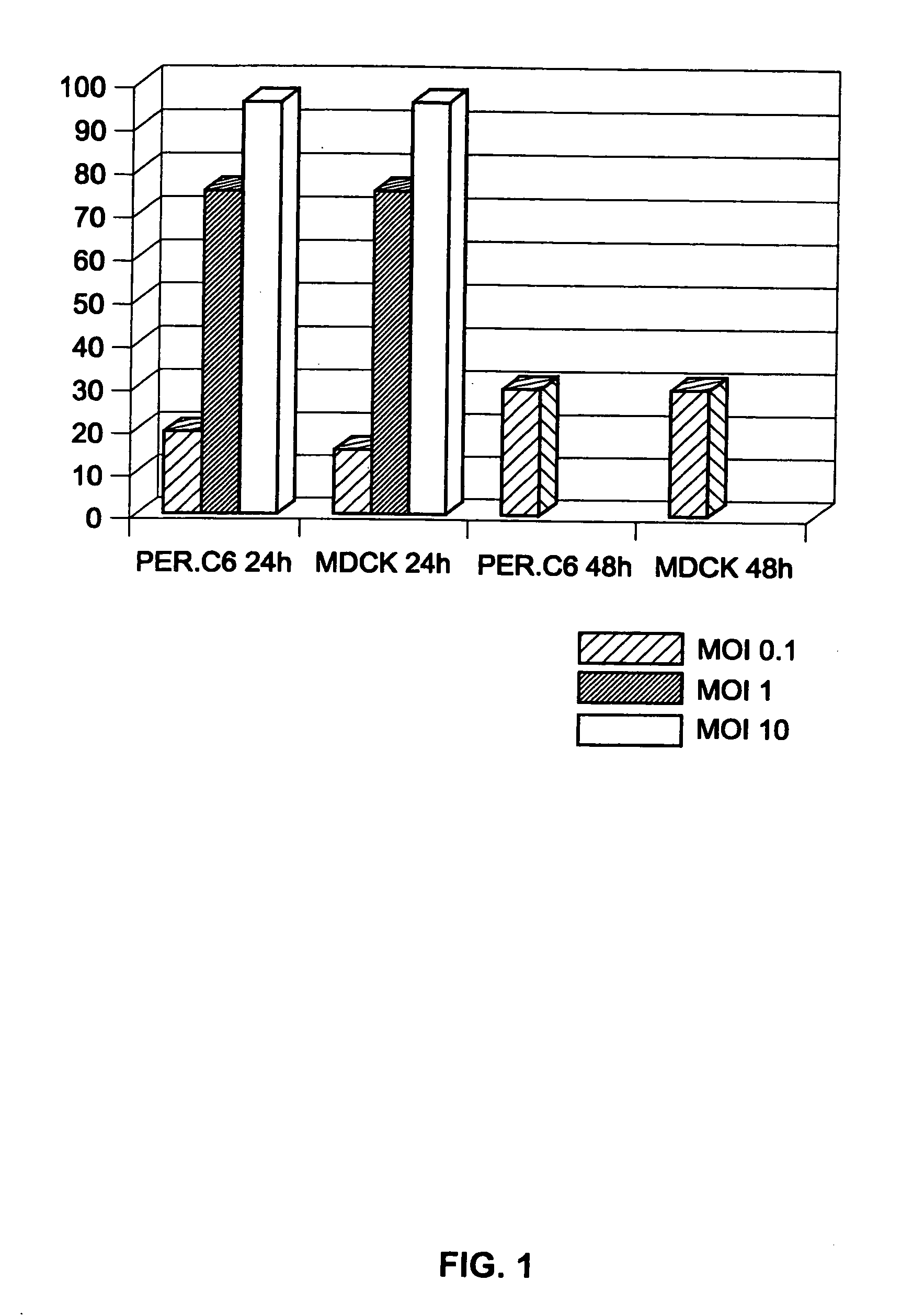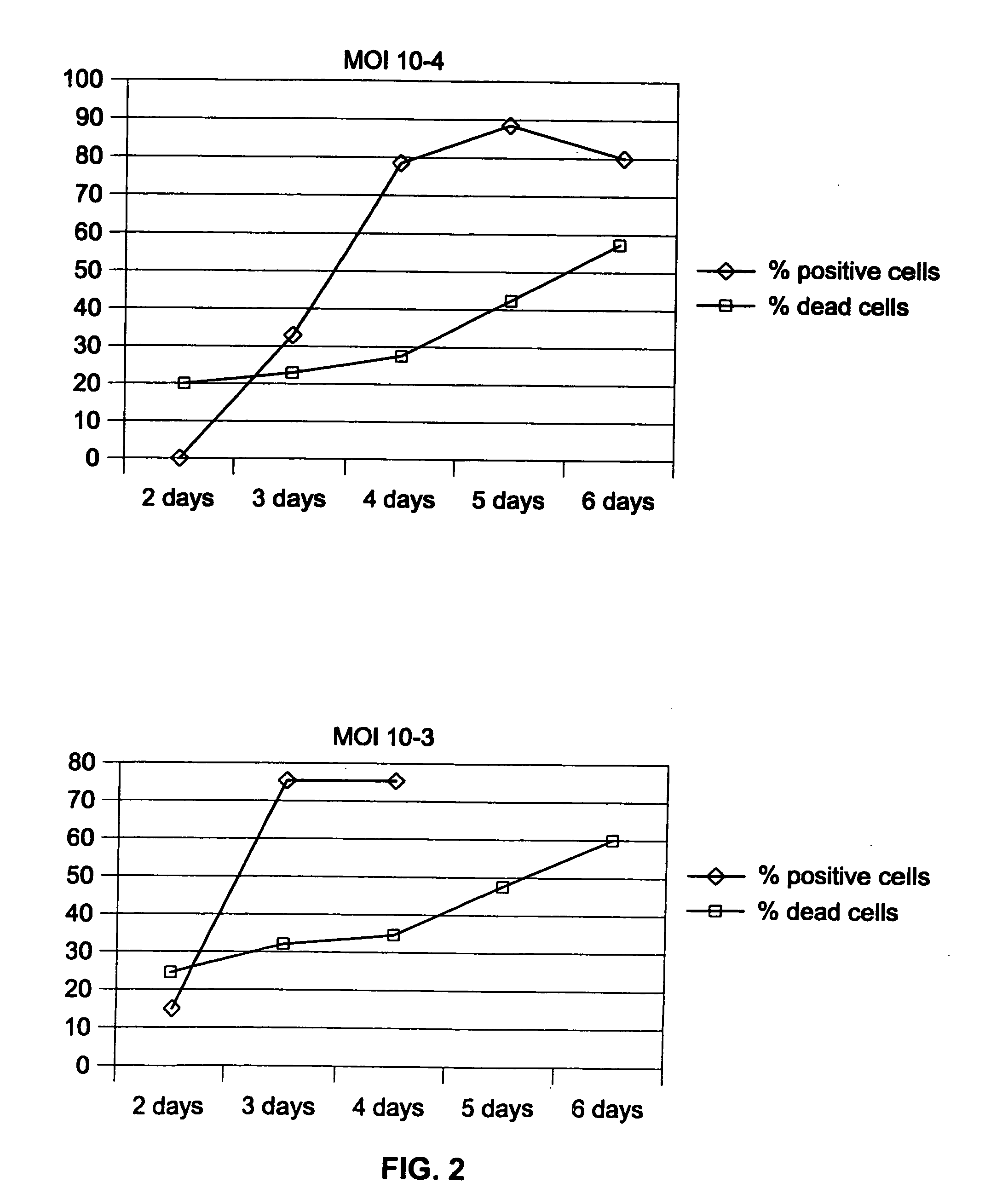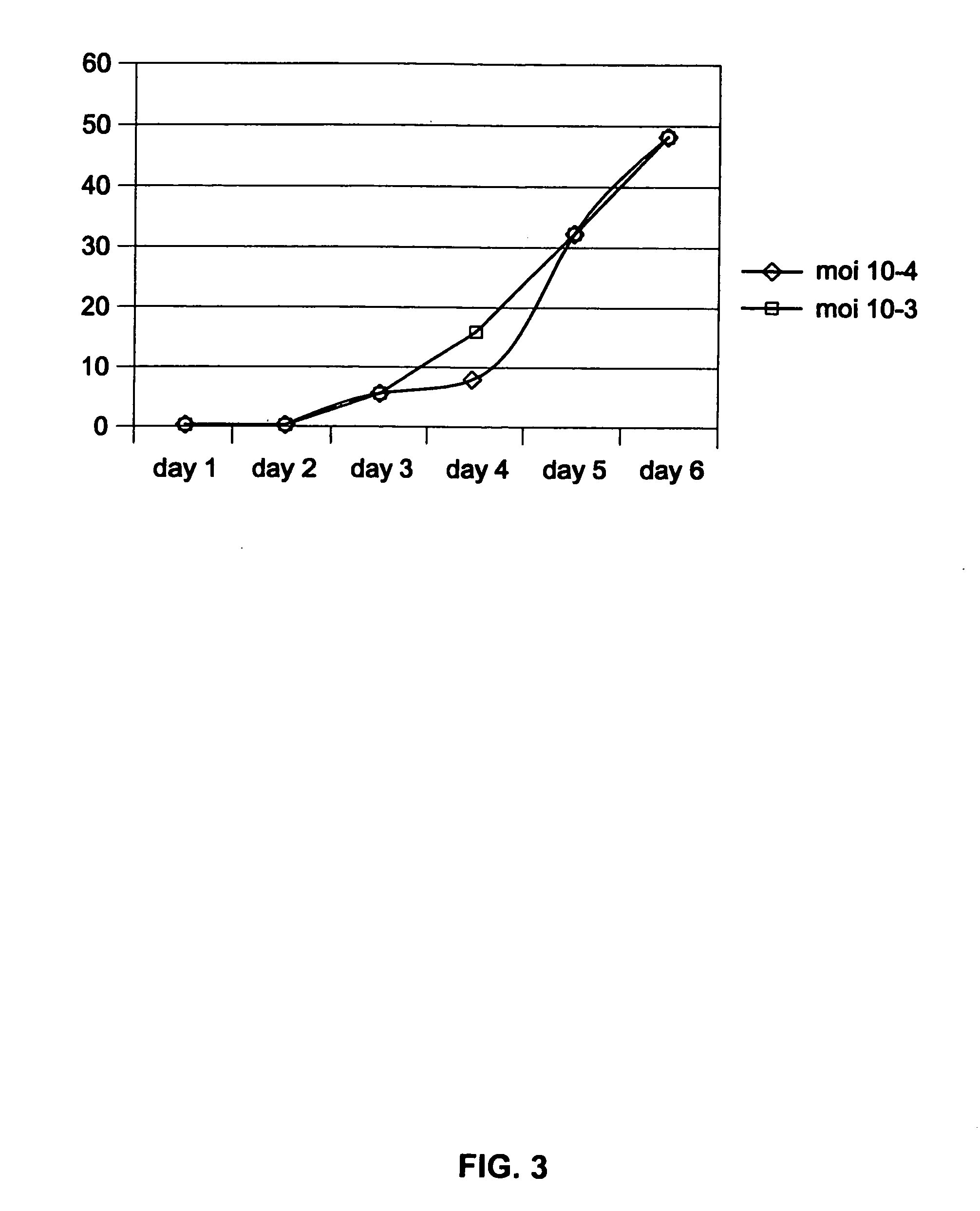Production of vaccines
a technology of vaccines and vaccines, applied in the field of biotechnology, can solve the problems of prohibitively low titers of influenza virus, substantial worldwide morbidity and mortality,
- Summary
- Abstract
- Description
- Claims
- Application Information
AI Technical Summary
Benefits of technology
Problems solved by technology
Method used
Image
Examples
example 1
Materials and Methods
PER.C6 and MDCK Cell Culture
[0092] MDCK cells were cultured in Dulbecco's modified Eagle's medium (DMEM, Life Technologies Breda, NL) containing 10% heat-inactivated fetal bovine serum and 1×L-Glutamine (Gibco-BRL), at 37° C. and 10% CO2. Suspension cultures of PER.C6 were cultured in ExCell 525 (JRH Biosciences) supplemented with 1×L-Glutamine, at 37° C. and 10% CO2, in stationary cultures in six-well dishes (Greiner) or in 490 cm2 tissue culture roller bottles (Coming Costar Corp.) during continuous rotation at 1 rpm.
Immunofluorescence Test
[0093] Direct immunofluorescence assays for the detection of Influenza virus infection were carried out using the IMAGEN™ Influenza Virus A and B kit (Dako) according to the standard protocol of the supplier. Samples were viewed microscopically using epifluorescence illumination. Infected cells were characterized by a bright apple-green fluorescence.
example 2a
PER.C6 Cell Banking and Pre-Culture
[0101] Cell line PER.C6, or derivatives thereof, were used. Cell lines were banked by a two-tier cell bank system. The selected cell line was banked in a research master cell bank (rMCB) which was stored in different locations. From this rMCB research, working cell banks (rWCB) were prepared as follows: an ampoule of the rMCB was thawed and cells were propagated until enough cells are present to freeze the cells by using dry ice. Up to 500 ampoules containing 1 ml (1-2×106 cells / ml) of rWCB were stored in the vapor phase of a liquid N2 freezer.
[0102] One ampoule containing 5×106 PER.C6 cells of the WCB was thawed in a water bath at 37° C. Cells were rapidly transferred into a 50 ml tube and resuspended by adding 9 ml ofthe suspension medium ExCell 525 (JRH Biosciences) supplemented with 1×L-Glutamine. After three minutes of centrifugation at 1000 rpm in a tabletop centrifuge, cells were resuspended in a final concentration of 3×105 cells / ml and ...
example 2b
PER.C6 Cells as Permissive Cell Line for Influenza A Virus
[0103] PER.C6 as a human cell was not known for its ability to sustain influenza virus infection and replication. It was, therefore, determined whether PER.C6 cells are permissive for influenza virus infection in comparison with the dog cell line MDCK that served as a positive control.
[0104] On the day before infection, 2×105 MDCK cells per well were seeded in six-well plates. Twenty-four hours later, 4×105 seeded PER.C6 and the MDCK cells per well were infected with the H1N1 strain A / Puerto Rico / 8 / 34 (titer 3.6×107 pfu / ml) (obtained from Dr. E. Claas, Leiden University Medical Center, The Netherlands). Infection was performed at various multipliticies of infection (mois) ranging from of 0.1 to 10 pfu / cell. After about two hours of incubation at 3 7° C., the inoculum was removed and replaced by fresh culture medium. A direct immunofluorescence assay for the detection of influenza virus infection was performed 24 and 48 hou...
PUM
 Login to View More
Login to View More Abstract
Description
Claims
Application Information
 Login to View More
Login to View More - R&D
- Intellectual Property
- Life Sciences
- Materials
- Tech Scout
- Unparalleled Data Quality
- Higher Quality Content
- 60% Fewer Hallucinations
Browse by: Latest US Patents, China's latest patents, Technical Efficacy Thesaurus, Application Domain, Technology Topic, Popular Technical Reports.
© 2025 PatSnap. All rights reserved.Legal|Privacy policy|Modern Slavery Act Transparency Statement|Sitemap|About US| Contact US: help@patsnap.com



